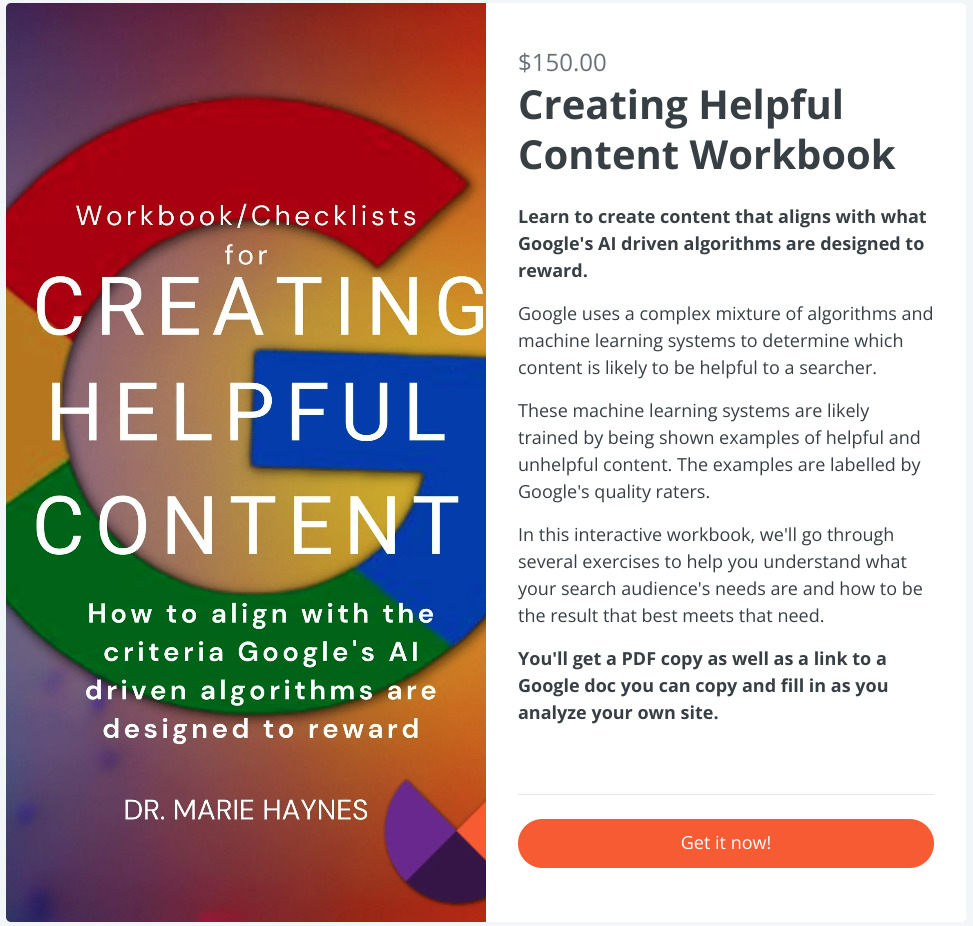The helpful content system produces a signal that is a “negative classification”. Sites that have this classification are suppressed from ranking at their full potential. But why do some sites improve during a helpful content system update? It may be simply at the expense of those who were suppressed. Or, there is another explanation. Google may have released a new model of helpfulness produced by machine learning systems. For example, the model may have changed to recognize real world experience as something that is to be considered. Some sites will get a boost in rankings because of this.
The hidden gems update will eventually promote sites
Google told us that one day the helpful content system would elevate hidden gems in search.
“Helpful information can often live in unexpected or hard-to-find places: a comment in a forum thread, a post on a little-known blog, or an article with unique expertise on a topic. Our helpful content ranking system will soon show more of these “hidden gems” on Search, particularly when we think they’ll improve the results.”
We have not yet seen this update.
"This work is still continuing and is not part of this particular update. We’ll share more about our work in this area in the future."https://t.co/kYZeciPgM5
— Google SearchLiaison (@searchliaison) October 11, 2023
Yet, there are plenty of examples of keywords where content came from out of nowhere to start ranking, in conjunction with the helpful content update.
'how to factor' – from position 93 to 5 during the HCU with a 5 year old thread… 88 sites got some level of ding? Including Khan Academy? Feels unlikely 🤷♂️
— Ian Howells (@ianhowells) October 10, 2023
Like you said, big wins in August overall.
But some of these are just so perfectly… Nowhere – HCU – Page 1 with content that's years old. pic.twitter.com/1PhgThgGp1
— Ian Howells (@ianhowells) October 10, 2023
Google’s model of helpfulness may change
Just like ChatGPT uses math to predict which word is likely to come next, Google uses math, in the form of machine learning systems to predict which content on the web is likely to be helpful.
During this helpful content update, many sites were demoted via an unhelpful content classification as I’ve described above.
Some content from Reddit, Quora and other sources did see improvements. These improvements started before the helpful content update, but they do appear to improve even further during it.
Here is a site that also appears to be doing well since the update. I see plenty of cases like this. This site sells a product. This is not a seasonal increase. They have real world experience in advising customers on this product. The site owner messaged me to tell me that he is starting to outrank Amazon for important queries since the start of the September helpful content update. I spot checked a few more queries, and since the update he’s gaining a position or two over many blogs and affiliate websites that write on his topic.

Now, the obvious explanation here is that these sites that compete against him have been classified by Google as less likely to be the most helpful result. Perhaps their rankings were previously bolstered by SEO efforts rather than on them being substantially valuable. Perhaps this site pictured above is only benefiting because they were demoted?
Some sites might be elevated during a helpful content update because they’ve had their unhelpful content classification lifted.
I think there is a better explanation for what is happening here. I think that a helpful content update means that Google’s model of helpfulness changed.
In December, Google added the extra E for Experience to E-A-T to the quality raters’ guidelines. This means that now, the quality raters’ evaluations take into consideration the degree to which content demonstrates experience when rating content as helpful or not.
For more reading to understand the role the quality raters play in these systems:
The September helpful content update: Why you were affected and what you can do
Google’s Helpful Content & Other AI Systems May Be Impacting Your Site’s Visibility
It makes sense to me that helpful content updates may represent changes to Google’s model which has been trained by looking at example after example of helpful and unhelpful results.
If I’m right, then content that demonstrates real world experience – content that’s written to help your audience – is what this model wants to reward. It’s not specifically promoted, but rather, it’s more likely to be seen as in line with content that is going to be helpful to answer a searcher’s question.
The “hidden gems” update will likely take this further, rewarding not only those who have real customers or audience that they are producing content for, but also those who are known as passionate enthusiasts for their topics.
More reading:
A new Topic Layer in the Knowledge Graph on the Google blog in 2018.
To sum up
Is the helpful content system only a negative classfication? For now, the classification only affects sites in a negative way. Eventually, Google says the system will reward content that comes from “hidden gems.”
My theory is that each helpful content update represents a change to Google’s model of helpfulness. This model is likely trained by using examples of helpful and unhelpful content identified by the quality raters. Sites that do well following a helpful content update haven’t specifically been promoted by Google, but rather, they are more likely to be seen as aligning with Google’s model of helpful content.
Your goal, whether you’ve been impacted or not by recent updates should be to always be producing content that your audience is likely to seek out because of its helpfulness.
If you want to learn to create content that aligns with the ideals Google’s AI systems are built to reward, you should find my workbook quite helpful. I wrote it based on many years of studying Google’s quality rater guidelines, documentation and also in helping businesses. It’s a Google doc workbook that will help you dig into the QRG and assess and improve your own content.




Comments are closed.